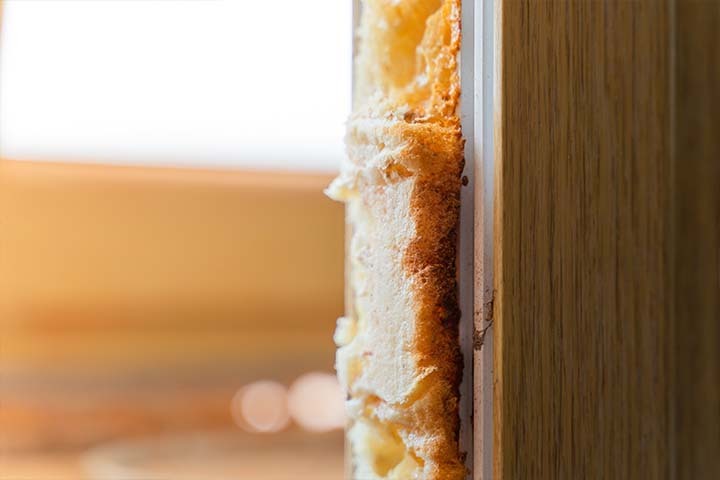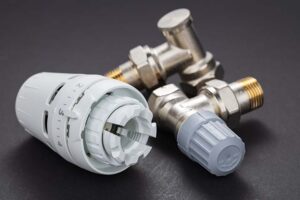Table of Contents
Is your old UK home cold and costly to heat? The problem might be in your walls. Homes built before 1980 often have empty cavity walls that let heat escape.
This guide shows how the right cavity wall insulation can cut your energy bills by up to 35%, stop dampness, and protect your home’s brickwork.
Why Cavity Wall Insulation Matters for Older UK Properties
More than 6 million UK homes built before 1980 have no cavity wall insulation installed. These are cavity spaces between the inner and outer brick layers. They were meant to keep rain out, but now they let heat escape.
Here’s why this matters:
- 33% of your home’s heat escapes through a lack of insulation material in cavity walls
- You could save about £405 each year by filling these gaps
- Proper insulation cuts the risk of dampness by 68%
If you’re wondering about the cost of cavity wall insulation in 2025, we break it down in this guide. Older homes have special cavity wall insulation needs:
- Their cavities are wider (75-100mm vs. 50mm in newer homes)
- They often have lime mortar as insulation material that needs to breathe
- Their timber parts can rot if the wrong type of insulation is used
A real success story: A 1920s home in Bristol saved £488 per year after getting polystyrene bead insulation. The original bricks still look great too.
Air Source Heat Pump Grants
7 Types of Cavity Wall Insulation: 2025 Best Cavity Wall Replacement
Cavity wall insulation material used throughout the insulation process varies as per the household needs. Below are some of the best cavity wall insulation materials suggested for different insulation types, mineral wool insulation, spray foam insulation, and mineral fibre insulation are also discussed.
1. Expanded Polystyrene (EPS) Beads
- Cost: £18-£22 per square meter
- Heat resistance: 4.0-4.5 per inch
- Best for: Homes with odd-shaped cavities or damp issues
These small foam balls are pumped into the cavity space. They fit around corners and fill gaps well. They don’t soak up water, which makes them ideal for wet areas.
If you’re concerned about potential issues, this guide on cavity wall insulation problems and fixes explains how to avoid common mistakes with EPS beads and other materials.
In 2025, about 62% of UK homes choose EPS beads for cavity wall insulation. They last over 50 years and don’t sink down over time.
2. Mineral Wool (Rock/Slag)
- Cost: £14-£20 per square meter
- Heat resistance: 3.0-3.7 per inch
- Best for: Fire safety and cutting noise
Made from melted rock, one of the top cavity wall insulation is mineral wool that won’t burn. It lets water vapour pass through, which works well with lime mortar walls. Insulation performance was better for mineral wool than other cavity wall insulation types.
It cuts noise by up to 52dB, but it’s about 15% less warm than EPS beads. If fire safety or noise are big issues for you, mineral wool is the best type of insulation material and worth thinking about.
3. Polyurethane Spray Foam (Wall Insulation to Avoid Dampness)
- Cost: £30-£40 per square meter
- Heat resistance: 5.5-6.5 per inch
- Best for: Maximum warmth
Spray foam expands to fill every gap, making a tight seal. This spray foam cavity insulation keeps in more heat than other different types of cavity wall insulation.
But it must be put in by experts. If done wrong, it can trap dampness against your inner walls. Good installers prevent 92% of damp problems.
4. Cellulose (cavity wall insulation for newly built homes)
- Cost: £15-£25 per square meter
- Heat resistance: 3.2-3.7 per inch
- Best for: Eco-friendly homes
Made from 85% recycled paper with added fire and mould blockers, cellulose is kind to the planet. It breathes well, which suits older building styles.
The downside? It doesn’t work as well in very damp areas. For most inland UK homes, though, it’s a good green choice.
5. Rigid PIR Boards
- Cost: £25-£35 per square meter
- Heat resistance: 6.0-7.2 per inch
- Best for: New builds & part-fills
These stiff boards keep heat in very well when cut to fit the cavity space. They work best in new builds or when you can take exact measurements.
For older homes with odd-shaped gaps, rigid insulation boards might leave air spaces that cause cold spots. They’re not ideal for Victorian or Edwardian homes with uneven walls.
6. Glass Wool Batts
- Cost: £10-£15 per square meter
- Heat resistance: 2.2-2.7 per inch
- Best for: Budget projects
These cavity batts are the cheapest option. They can be placed in the cavity during building work.
Watch out though – they can sag over time and hold water in damp settings. If you live in a rainy area, this type of cavity wall insulation might not be best.
7. Sheep’s Wool
- Cost: £28-£35 per square meter
- Heat resistance: 3.5-3.8 per inch
- Best for: Green heritage homes
This natural insulation material helps control dampness by soaking up and releasing moisture without losing heat. It’s one of the most eco-friendly insulation options.
You need at least 75mm of cavity width for sheep’s wool, so it won’t work in all homes. For Victorian houses with wider cavities, it’s a great choice that lets walls breathe.
What's the Best Cavity Wall Insulation for Damp-Prone Homes?
Picking the wrong insulation for a damp home can cause big problems. Three Insulation materials stand out for wet areas:
1. EPS Beads: The Moisture Expert
- Doesn’t soak up water
- Let water drain away
- Stops water from wicking through walls
- Best for: Coastal homes, basements, and houses with damp issues
2. Hydrophobic Mineral Wool: The All-Rounder
- Has added water-repellent
- Keeps working even when slightly damp
- Let water vapour pass through
- Best for: Homes with minor damp or seasonal wet issues
3. Phenolic Foam Boards: The High-Performance Choice
- The closed-cell design keeps water out
- Excellent heat resistance (7.5 per inch)
- Needs expert fitting
- Warning: Avoid standard fibreglass in damp areas—it traps water against inner walls and can rot timber
Mineral Wool vs Polystyrene Beads: Which Works Better?
When choosing between these popular options, think about:
| Feature | Mineral Wool | EPS Beads |
| Heat Resistance | 3.4 per inch | 4.3 per inch |
| Fire Safety | Won’t burn | Melts at 100°C |
| Sound Proofing | 52dB less noise | 38dB less noise |
| Damp Resistance | Fair | Excellent |
| Eco-Friendly | Can be recycled materials | Can’t be recycled |
Real-world examples show their strengths:
- A London terrace used mineral wool to cut street noise by 60%
- A Cornish cottage fixed rising damp problems with EPS beads
Choosing the right material depends on your property and goals. This comparison of DIY vs. professional cavity wall insulation replacement can help you decide the best approach for your home.
How to Avoid Dampness When Insulating Older Cavity Walls?
To prevent damp problems, follow these steps:
Step 1: Check Your Cavity First
Before adding any insulation, use a camera to look for:
- Existing damp patches
- Cracked mortar
- Rusty wall ties (common in pre-1970 homes)
Step 2: Plan for Moisture Control
Fix problems before insulating:
- Use breathable membranes with EPS beads in risky areas
- Try foil-backed boards in very damp spots
- Replace rusty wall ties (costs £12-£18 each)
Step 3: Check After Insulating
Make sure it worked:
- Use thermal cameras to find cold spots
- Place damp meters in problem rooms
- Look for leaks during heavy rain
Pro Tip: Don’t block air vents. Old homes need airflow to stay dry.
Eco-Friendly Options: Sustainable Cavity Wall Insulation
If you care about the planet, try these green options:
1. Recycled Denim
- Made from 90% recycled jeans
- Heat resistance: 3.5 per inch
- Best in drier areas
- Keeps textile waste out of landfills
2. Hempcrete
- Actually removes CO₂ from the air
- Heat resistance: 2.5 per inch
- It needs wider cavities (at least 100mm)
- It helps control moisture and air quality
3. Cork
- Harvested from living trees
- Naturally resists mould and pests
- Costs more (£40-£50 per square meter)
- Great for sound and heat
2025 Money Help: The ECO4 scheme offers £1,500-£5,000 grants for green insulation in older homes.
2025 Cost Guide: Materials, Install & Payback Times
| Insulation Material | Cost per m² | 80m² Home | Payback Time |
| EPS Beads | £20 | £1,600 | 3.1 years |
| Mineral Wool | £17 | £1,360 | 4.3 years |
| Spray Foam | £35 | £2,800 | 5.9 years |
| Cellulose | £22 | £1,760 | 4.7 years |
Based on gas at £0.12/kWh and normal UK heating patterns
Key Tips for Successful Cavity Wall Insulation
- Warning: Don’t use standard fibreglass in damp cavities—it traps moisture and damages walls
- Safety First: Mineral wool is safest for terraced homes where fire spread is a concern
- Damp Control: EPS beads work best in wet climates and coastal areas
- Measure First: Check your cavity width before the insulation material you choose —Victorian homes often have wider gaps
- Get Experts: Use only certified installers who know your type of property
Final Thoughts
The right cavity wall insulation injected into the cavity does more than cut your energy bills. It makes your home more comfortable and healthier while protecting its structure for decades.
Understanding your home’s needs and picking the best type of cavity wall means investing in comfort, value, and helping the planet.
For personal advice and professional installation, talk to certified insulation installers who know your type of property. The best solution balances heat retention, moisture control, and structural needs—giving you insulation that’s perfect for your unique home.
Frequently Asked Questions
Poor installation can lead to dampness if:
- Insulation Materials trap moisture
- Wall problems aren’t fixed first
- Airflow is blocked
Choose breathable insulation material options like EPS beads or treated mineral wool to reduce risks.
Look for these signs:
- Brick pattern (stretcher bond means cavity walls)
- Wall thickness (solid walls are usually over 22cm)
- The build date (most UK homes after 1920 have cavity walls)
If unsure, a professional can drill a small test hole to check.
For Grade II listed homes, cavity wall insulation is usually allowed as it doesn’t change how the building looks. Always check with your conservation officer first. Grade I and II* listings may need special permission.
Life spans vary:
- EPS Beads: 50+ years
- Mineral Wool: 25-30 years
- Spray Foam: 20-25 years
- Cellulose: 20-30 years
Good installation helps any material last longer.



